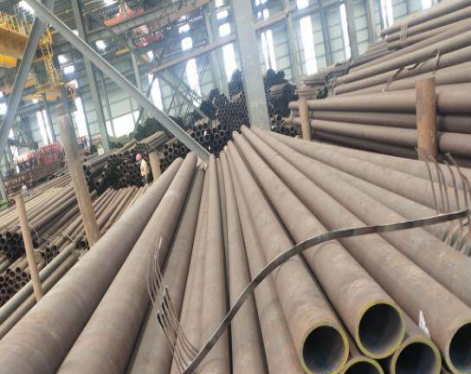There are many reasons for the longitudinal cracking of thick-walled seamless steel pipes, including material and process reasons. Taking thick-walled seamless steel pipe as an example, if the thick-walled seamless steel pipe has poor plasticity or poor annealing, the probability of longitudinal cracking will increase, but the fundamental reason is that the cold drawn thick-walled seamless steel pipe has large residual stress.
According to the concept of cracking mechanics, the cracking of components is the result of the formation and propagation of internal microcracks. The longitudinal cracks of thick-walled seamless steel pipes are basically brittle cracks, and the crack form is open.
In general, the existence of metal microcracks is inevitable, but under the same material conditions, the occurrence of cracks depends on the tensile stress of the component. The tensile stress that affects the component can either be loaded outside the component or exist in the residual stress of the component.
After cold drawing, especially after air drawing, the residual stress is relatively large, which is manifested as the tangential and axial tensile stress near the outer surface of the thick-walled seamless steel pipe, and its value can reach a large value. According to the above-mentioned tensile cracking mechanism, it can be concluded that the tangential residual stress near the outer surface of the thick-walled seamless steel pipe plays a key role in the longitudinal cracking of the thick-walled seamless steel pipe.
According to the concept of cracking mechanics, the cracking of components is the result of the formation and propagation of internal microcracks. The longitudinal cracks of thick-walled seamless steel pipes are basically brittle cracks, and the crack form is open.
In general, the existence of metal microcracks is inevitable, but under the same material conditions, the occurrence of cracks depends on the tensile stress of the component. The tensile stress that affects the component can either be loaded outside the component or exist in the residual stress of the component.
After cold drawing, especially after air drawing, the residual stress is relatively large, which is manifested as the tangential and axial tensile stress near the outer surface of the thick-walled seamless steel pipe, and its value can reach a large value. According to the above-mentioned tensile cracking mechanism, it can be concluded that the tangential residual stress near the outer surface of the thick-walled seamless steel pipe plays a key role in the longitudinal cracking of the thick-walled seamless steel pipe.









